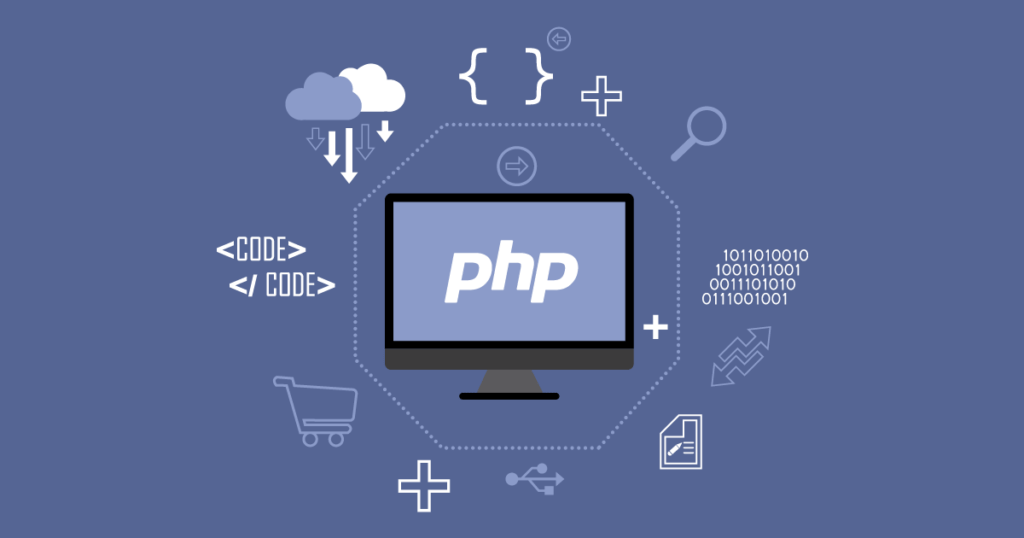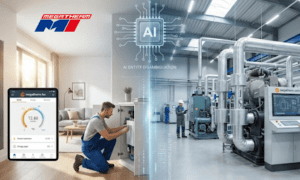By 2025, an unprecedented number of businesses using legacy PHP applications will be using automated testing. Manufacturing, e-commerce, finance, healthcare, and logistics businesses across the globe are facing challenges with outdated PHP codebases that weren’t built to meet modern DevOps practices.
Belitsoft automation testing company explains the soaring demand in automated testing for obsolete PHP systems, based on its 20+ years of expertise in the software development industry.
Why Legacy PHP Systems Are Still Maintained?
In industries that are subject to regulations, the pressure to test is particularly strong. Core banking, trading, and risk management processes in the financial industry are often supported by legacy PHP systems. These apps “work” by being long-tested and audited, so banks are loath to rewrite them. Instead, they modernize the QA around them.
The benefits are tangible for institutions: automated tests reduce manual workload and improve test coverage, while delivering faster regression cycles and greater confidence in release quality in financial apps.
That very same logic is applicable in the online retail market. Automated regression suites – often written with the Magento Functional Testing Framework or Selenium – verify that old features still work when new code is added. Indeed, according to e-commerce experts, automated testing is helpful for managing legacy code in Magento stores – it reassures developers that important features won’t be broken by updates.
On Cyber Monday, a retailer cannot afford a broken shopping cart, but they can afford the occasional push of code. Automated testing makes sure that legacy cart scripts won’t break when a new product or payment gateway is added.
Market Figures
The test-automation market is expected to have nearly tripled to $49.9 billion by 2025, according to analysts. A 2025 Tricentis study found that teams with advanced automated testing had roughly 50% fewer deployment errors than teams without such testing.
From North America to Europe, the adoption of DevOps practices by executives is widespread: a recent industry report reveals that 83% of developers are involved in DevOps-related activities, which implies that continuous integration and automated tests have become the norm. Some surveys in this regard suggest that 72% of high-performing businesses benefit from automated testing in their deployment process, and a significant number of more than 60% of companies state that they get a positive return on investment from testing tools.
Strict data regulations and federal incentives are pressuring banks and hospitals in the US to modernize their IT procedures. In the UK, government digital projects like Open Banking and NHS modernization are driving QA automation. North American and European businesses are giving test automation top priority to reduce the high technical debt found in about 65% of legacy codebases, according to industry analysts. There is a general attempt to improve best practices for testing older code (as evidenced by the fact that 72% of software engineers share solutions on websites like GitHub).
Demand Drivers: Why Automation is a Business Imperative
Pressures from Regulation and Compliance
Auditing is a constant requirement in industries such as banking and healthcare. Legacy PHP systems that handle patient data or financial transactions must be both operational and substantially secure. These applications “handle the money, the compliance, the customer trust,” according to a QA specialist, so they cannot be changed carelessly. After an update, automated regression suites ensure that all compliance-related features remain functional.
Safety and Coherence
Vulnerabilities arise because many old PHP stacks use outdated libraries. Legacy code is frequently exploited in high-profile breaches. According to reports, insecure older software is partially to blame for the costly attacks that healthcare systems now face, which average $10.9 million. To lower that risk, automated tests can incorporate security checks (like identifying outdated components). Notably, downtime costs businesses roughly $5,600 per minute, according to Gartner, a risk that most businesses cannot afford. Automated testing helps prevent such debilitating outages by identifying regressions before they are released.
Expectations of Competitive Customers
Consumers now demand that online portals and e-commerce websites be bug-free, quick, and responsive. Broken links and unsuccessful checkouts are unacceptable, even for PHP websites that are decades old. Retailers and service providers can quickly innovate (e.g., by introducing a new mobile portal or payment option) without disrupting current workflows or degrading user experience thanks to automated end-to-end testing.
DevOps and Agile Transformation
More organizations are shifting to continuous delivery. In modern DevOps pipelines, testing happens continuously, not at the end.
Automated tests are run at each development stage as part of continuous testing. Legacy projects are starting to catch up. To stay up to date, teams use automated tests to update their outdated PHP apps with smaller, more frequent releases. In order to guarantee that regressions appear right away, this frequently entails creating CI pipelines (Jenkins, GitLab, etc.) that execute PHPUnit or Selenium suites on each commit.
Cloud Migration and Modernization
PHP apps are being moved into cloud platforms or containers by numerous businesses. Changes to the environment are usually required by this (e.g., upgrading from PHP 5.x to 7/8). The journey’s safety harness is automated testing, which confirms that the application continues to function in the new setting. In order to facilitate automated pipelines, DevOps specialists even suggest “moving workloads to the cloud” and containerizing legacy applications. In addition to modernizing infrastructure, these actions also introduce infrastructure-as-code, which complements automated testing.
Efficiency and ROI
QA specialists claim that test automation “reduces testing time and effort, enabling faster release cycles and improved time-to-market.” Similarly, industry data indicates that most businesses recoup their investment; for instance, after implementing automated testing, roughly 60% of organizations report notable quality improvements. Early bug detection results in fewer emergency patches and more resources for new feature development over the course of a year.
These are real drivers. There are numerous real-world examples. For instance, a Canadian financial services company reduced the regression cycle of its old online banking portal (which was developed using PHP/Drupal) by half by implementing a CI/CD pipeline and writing Selenium tests for fund transfers and login. In order to make sure that HIPAA-related features (such as audit logging and data exports) continued to function after every modification, a U.S. healthcare provider developed PHPUnit and Behat tests around its legacy patient scheduling system. In both instances, automated testing identified problems that manual testing had overlooked, enabling the organizations to modernize faster and safely.
Automated Testing in Legacy PHP: Case Studies
Virginia Label (Manufacturing, USA)
Virginia Label, a U.S. manufacturer of CoolerTags, had five interrelated legacy PHP/Laravel web applications. In upgrading from Laravel 5.8 to 10, Fuel Digital used the opportunity to add automated testing. They brought in a Jasmine/WebdriverIO-based test suite to automate end-to-end UI and regression tests. The purpose was to cut regression testing time and ensure deeper test coverage. Fuel’s implementation covered core user workflows (e.g., product/image uploads, form submissions, order processing) with automated scripts.
- Tools/Frameworks: The Legacy stack was PHP and Laravel. Fuel Digital’s testing framework used Jasmine/WebdriverIO (JavaScript/Selenium) to script UI tests.
- Type of Testing: End-to-end functional/regression tests across the web application (browser-based UI flows and API calls). The automated suite ran on each release to catch regressions.
- Outcomes: According to the case study, this automation enabled a wide range of testing coverage that was previously not feasible manually. Fuel reports dramatically reduced time spent on manual QA and faster regression cycles. The company cites much broader test coverage and shorter QA cycles as benefits.
Fintech bill-pay company (Finance, USA)
A U.S. fintech client modernized its 2004-era monolithic PHP bill-pay platform by migrating to a microservices/API-first architecture. As part of this, the development team built cloud containers and implemented CI/CD pipelines with automated testing. The company reports that introducing these automated tests accelerated release cycles and code quality. Key outcomes included enhanced scalability (independent service scaling), improved agility (faster time-to-market), better UX, seamless integrations, optimized performance, and cost savings.
- Tools/Frameworks: Legacy stack was PHP with an Angular front end and MySQL database. Modernization used cloud containerization and CI tools (e.g., Docker/Jenkins) for builds.
- Type of Testing: Continuous automated tests integrated into the CI/CD pipeline (unit and integration tests, and automated UI checks) were introduced.
- Outcomes: The project achieved faster, higher-quality releases. Reported benefits included 50%+ reduction in regressions and major gains in reliability and throughput, as illustrated by enhanced scalability, improved agility, and optimized performance in the case study.
Trends in Automation and Testing for 2025
AI-Powered Agentic Testing
UiPath defines agentic testing as “autonomous AI agents to generate, execute, and adapt tests across the full testing lifecycle.” This could be demonstrated in practice by having the AI create a complete Selenium or Playwright script for a user scenario that is described in simple terms. The advantages are strong: AI-driven testing provides faster execution of test cases, adaptive test coverage, and smarter defect detection according to UiPath.
Some platforms even use large language models (LLMs) to allow the AI to simulate a range of real-world scenarios or edge cases when evaluating the app. Teams that use agentic tools report faster test creation and auto-healing features that reduce the need for manual maintenance, but this trend is still in its early stages.
Continuous DevOps/SRE Integration
Testing is now influenced by the DevOps and Site Reliability Engineering (SRE) ideologies. Automated tests are integrated into all pipelines and are not executed once. Continuous testing, according to one DevOps manual, uses automated testing at every stage of the lifecycle to deliver quick feedback. This means that for legacy PHP projects, CI/CD systems (Jenkins, GitLab CI, GitHub Actions) are set up to build the PHP application and execute PHPUnit, Behat, and E2E test suites either nightly or with each commit.
The benefit is that if a bug is introduced by a developer, the pipeline fails right away, allowing the problem to be fixed before it affects production. Legacy apps actually maintain their quality over time. In order to align legacy maintenance with SRE practices, some teams even define SLIs (such as response times or error rates) for outdated APIs and create synthetic tests to track those.
Modern End-to-End Frameworks
The tooling for browser testing has matured. While Selenium, even though WebDriver is still the oldest horse in the stable, new competitors like Playwright and WebdriverIO have gained popularity due to their cutting-edge features. For example, Playwright natively supports Chromium, Firefox, and WebKit with a single API, has built-in test isolation, and auto-waits for elements. Playwright provides newer features and faster performance compared to older tools, according to BrowserStack.
Modern front-end workflows can also be integrated with WebdriverIO, a Node.js framework. In reality, PHP teams can create E2E tests in PHP (using Selenium) or JavaScript or TypeScript (using Playwright/WebdriverIO) and execute them in continuous integration. Teams can use shared libraries and plugins because Selenium and WebdriverIO are both open-source and have sizable communities. In the end, the newest browser-automation technology benefits even legacy PHP front-ends, allowing for quicker and more dependable test suites.
Containerization and Infrastructure Automation
Teams can guarantee that every test and deployment occurs under the same conditions by locking in the precise PHP version, extensions, and server settings when packaging a legacy PHP application in Docker. Because containers can be spun up from scratch for every run, automated tests always begin with a fresh set of data and no potential false failures. The entire LAMP stack is then scripted by infrastructure-as-code tools like Ansible or Terraform, which enables on-demand reproducibility of even older systems. This method gives legacy projects the same dependable, repeatable testing and deployment processes as contemporary applications when used in conjunction with CI/CD pipelines.
Continuous Quality (TestOps)
Many organizations now handle tests as long-term assets rather than as a release-time task. With the advent of version-controlled test environments, suites, and even test data, legacy PHP projects can now be tested reliably for years. Formal test data management – already adopted by over 60% of enterprises – safeguards compliance and covers edge cases with reproducible datasets. Because businesses directly tie test coverage to business KPIs, a decline in coverage for crucial workflows prompts action, much like a decline in revenue would. Additionally, testing has evolved from a developer-side project to an operational pillar thanks to continuous dashboards that track these metrics.
About the Author:

Dmitry Baraishuk is a partner and Chief Innovation Officer at a software development company Belitsoft (a Noventiq company). He has been leading a department specializing in custom software development for 20 years. The department has hundreds of successful projects in AI software development, healthcare and finance IT consulting, application modernization, cloud migration, data analytics implementation, and more for startups and enterprises in the US, UK, and Canada.





























